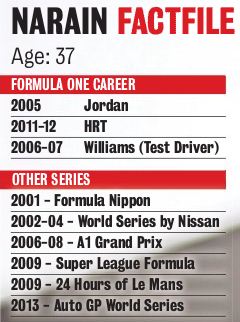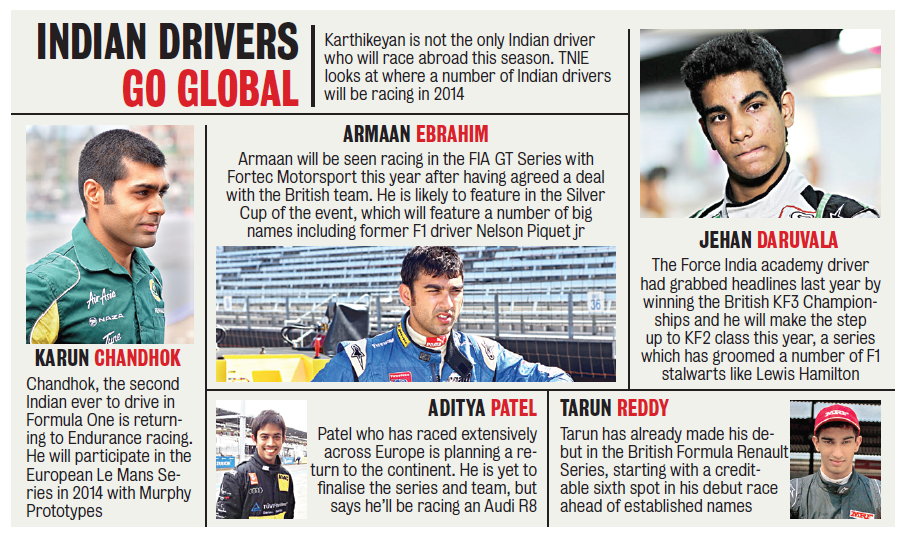Category Archives: World Opinion
Region’s earliest interface with Islam was here
Madurai :
The wide Kazimar Street, which branches off from the busy TPK Road near Periyar Bus stand, is one of the oldest settlements of Muslims in Madurai. Historical legends state that Hazrat Kazi Syed Tajuddin came to Madurai from Oman in the 13th century and established the Kazimar Big Mosque on a land given to him by a Pandya monarch.
Till date, the descendants of Syed Tajuddin, who is believed to be a descendant of Prophet Mohammed, live on the Kazimar Street. They are hereditarily elected as the town kazis.
Syed Ahja Mueenudeen, the current town kazi, said that the Kazimar Big Mosque, which was constructed by Tajuddin as a thatched structure initially, was the first place of worship for Muslims in Madurai. The street has had Muslims settlement for over 700 years, he said. Thus, Islam arrived in Madurai even before Malik Kafur’s invasion of Madurai in the 14th century.
History professor R Venkataraman opines King Maravarman Sundarapandian might have been the contemporary of Tajuddin. Even before the advent of Islam, Arabs maintained trade links with South India, especially for the pearls Madurai Pandya Kingdom was famous for. “Sufis, Muslim saints, started coming to Tamil Nadu by 900 AD. The entry of Islam to the region was peaceful as Sufis conceived God as love,” he said.
The short-lived Madurai Sultanate and Islamic influence did have their impact on the city, especially on warfare and town planning. “Muslim rulers introduced arch construction they learnt from the Romans. It changed the style of architecture here in a significant way,” Venkataraman remarked.
The Big Mosque, which is an architectural attraction, accommodates Madurai Maqbara which is the dargah of sufi saints Hazrat Meer Ahamad Ibrahim, Hazrat Meer Amjad Ibrahim and Hazrat Syed Abdus Salaam Ibrahim Rahmatullahi Alaihim.
Syed Ali Hussaini, the renowned Chennai-based stunt artist, is originally from Kazimar Street. Recalling the legend of Tajuddin, he said: “It is believed that Tajuddin came from Arabia to Kerala and reached Madurai where he established a mosque. He became popular for divine healing powers. The Pandya king was irked with his fame, but Tajuddin cured the king himself when he suffered from a stomach ailment. The king gave away a land for mosque in gratitude,” he said. “Even today Tajuddin’s descendents, numbering more than 2,000, are annually given a customary nominal share of the income from the waqf lands originally donated by the king,” he added.
Till the 1980s, the residents of the street were engaged in rearing horses, rams, cocks and pigeons. “People were crazy about horses and many raised them. Rekla or bull cart race and pigeon racing were popular when I grew up in the area in the 1960s,” Hussaini recalled.
However, the face of the area has changed since then with many moving out for education and jobs, he said.
source: http://www.timesofindia.indiatimes.com / The Times of India / Home> City> Madurai / by J. Arockiaraj, TNN / April 27th, 2014
Surprise win at Tamil singing contest

Read more: Surprise win at Tamil singing contest – Sunday Life & Times – New Straits Times
Ganesan Manoharan and Iris Perrine shine in Superstar Challenge 2014, writes Faisal Asyraf
IN a singing competition, there’s no guarantee of coming up tops even if you’re praised by the judges. Malaysian duo Ganesan Manoharan and Iris Perrine received back-to-back praises only to come in third at the recent Superstar Challenge 2014 international Tamil singing competition.
First runner-up was Singaporean duo Vishnu Balaji and Pavithra Nair, while Aravind Sandhya and Abilasha Venkata Chellum from India, won the grand prize of S$20,000 (RM50,780).
Second and third place prizes were S$5,000 and S$3,000 respectively.
In its second year, the competition saw participation from Malaysia, Singapore, India, Sri Lanka and Canada and was broadcast live on Vasantham Central Singapore and Vasantham TV Sri Lanka.
Last year, Malaysian duo Santhesh Kumar and Charumathy Savaratnam won the championship title, so there were high expectations for Ganesan and Iris to repeat the success.
Prior to the competition held in MediaCorp TV Theatre, Caldecott Broadcast Centre Singapore, the bubbly Iris said: “We have been practising five to eight hours daily for six weeks. We are ready to rock!”
Well, they did rock with commendable performances in all three rounds — fast beat, acoustic and a 1980s song.
In the first round, Singaporean judge Mohammed Rafee said “while I had a lot to jot down on paper about the other contestants, there’s nothing for me to write about your performance. It was perfect”, referring to their performance of Jingunamani.
“You enjoyed yourselves on stage, and you made the audience happy. This is what entertainment is all about,” added the judge who worked with renowned Indian composer A.R. Rahman on the song Sonatai Seitu Mudipom.
Mohammed Rafee added that Iris had a total package to make it in the entertainment scene, including strong vocals and the magnetism to attract the crowd.
Iris had participated in other talent competitions such as Asia Bagus (1994) and Vaanavil Superstar (2009) and she came in first runner-up.
Other judges include Praba Balakrishnan (Canada), Sivaguru Sithambaram (Malaysia), Harish Raghavendra (India) and M. Mohanraj (Sri Lanka).
When the Singaporean co-hosts Jaya Ganesh and Eswary Gunasagar announced the fifth and fourth place winners, the audience had anticipated Sri Lanka and Canada respectively.
“Who’s the second runner up?” asked Jaynesh. Some in the audience shouted India and Singapore. So, when the result was announced, it caught everyone by surprise.
The champions, Aravind and Abilasha, possessed excellent vocal skills, despite a lack of showmanship. They performed Katcheri-Katcheri and Ahruhive-Ahruhive in the first and second round, respectively.
After their performance of Enn Jodi Manja Kuruvi in the third round, judge Mohammed Rafee said: “If there was a solo category in this competition, Abilasha would undoubtedly win. Aravind should thank Abilasha because she is the anchor of this performance.”
Abilasha, in her 20s, has been singing professionally for six years. She won the singing competition Zee Saregamara (Hindi version) in 2010. Aravind won with Zee Saregamara (Tamil version) in 2012, back in India.
The duo had only three days to practice before Superstar Challenge 2014.
Other competitors who wowed the audience were Vishnu Balaji and Pavithra from Singapore. In the third round, they put on an entertaining gimmick by wearing afro wigs, as they belted out Onnum Teriyate.
Meanwhile, this is not the end for Ganesan and Iris.
“We know we have put on a good show, but Lady Luck was not on our side this time. I believe in my talent, and I hope to clinch a recording offer,” says Iris. Ganesan says he will be participating in more singing competitions.
Watch the show on Astro Vinmeen HD (Ch 231) today at 6pm, in conjunction with Chithirai Puthandu.
source: http://www.nst.com.my / New Straits Times / Home> Sunday Life & Times / by Faisal Asyarf (faisal.asyraf@nst.com.my) / April 13th, 2014
Desperate Sharath Kamal wants to retain CWG gold medals at Glasgow
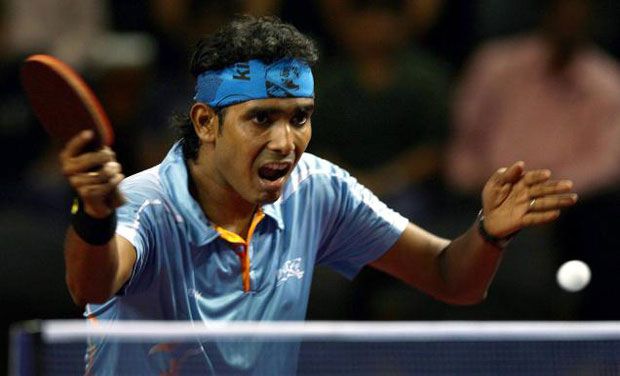
New Delhi:
India’s top table tennis player Sharath Kamal thinks he has finally won his long battle against a shaky backhand, which has helped him equal his career-best ranking of 39 in nearly four years.
The jump in the rankings has also given the three-time Commonwealth Games gold medallist the confidence to set high targets in 2014, a crucial year with the World Championships, Commonwealth Games and Asiad all lined up from late April to August.
On top of his wish list is breaking into the top-30 by year end. He also wants to regain the CWG singles and team titles he won in 2006.
“Playing in these big events gives me a chance to further improve my rankings. I think with the level of table tennis I am playing at the moment, I can probably look at a top 30 spot by 2014 end,” Sharath told PTI from Dusseldorf where he has spent two years playing for top German club Borussia Dusseldorf.
He further said about his expectations: “Most importantly, I would like to win back the singles and team gold at the CWG but the mighty Singaporeans will be there as always and we have to figure out a way to beat them. Asian Games will obviously be tougher but I will try to get the maximum out of it.”
Interestingly, it was right before the 2010 CWG in New Delhi that the Chennai-born paddler broke into the top-50 and he has again found his rhythm ahead of the Glasgow Games in July-August. He endured a tough time in between as the changes he made in his game did not bear fruit.
He started losing to lower-ranked players and even the youngsters back home besides letting go off his throne at the National Championship after winning it six times. Now he feels he has improved significantly in the last 12 months with his ever lethal forehand complimenting a solid backhand, considered vital in the modern game.
“All this improvement is a result of stability in my backhand. I am pretty much a different player from last year and have improved my game in all aspects. Training in Germany for the last two years too has helped a great deal,” said the lanky player.
It was only in March he recorded the biggest win of his career, beating World No.8 Chuang Chih-Yuan of Chinese Taipei in the Asian Cup. India’s foreign coach Peter Engel, too, is pleased with Sharath’s progress but warns his backhand issues are not solved yet.
“His backhand has become better but still there is a lot of room for improvement. The recent results show that he is winning the important points and is more relaxed with his service. As he is hardly training with us in India, I hope his club coaches fix the flaw completely,” Engel said.
Overall, the last six months have been encouraging for Indian table tennis with youngsters Harmeet Desai (136) and Soumyajit Ghosh (118) entering the world’s top-150. Senior player Anthony Amalraj falls just out of that bracket on 151.
Sharath said the future augurs well for the men’s team. “This is a really good sign and Amalraj should be also be in the top 150 soon. Now we have a very balanced team and we can challenge many of the world’s top teams. Ghosh and Harmeet will break the top 100 barrier mark if they continue the same way,” the 31-year-old concluded.
source: http://www.deccanchronicle.com / Deccan Chronicle / Home> Sports> Other Sports / PTI / April 11th, 2014
Germany in Cuddalore
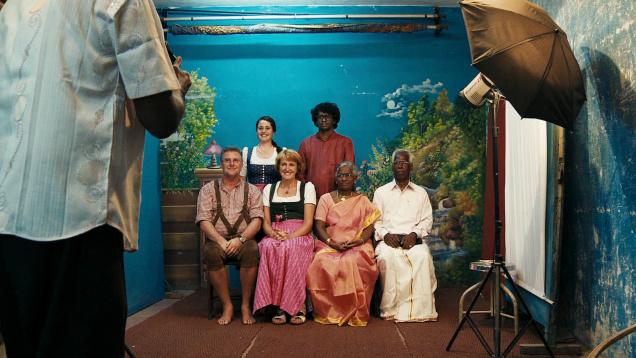
An autobiographical movie that shows we are not so different, after all
What happens when a damsel from Bavaria and a gent from Cuddalore meet, fall in love, and then make their parents meet? While a clash of cultures is assured, lots of laughter and tender moments also ensue. Franziska Schönenberger and Jayakrishnan Subramanian, a filmmaker and artist couple who met in Mumbai, chronicle this journey from ‘otherness’ to ‘happily ever after’ in Amma & Appa, a documentary which premiered at the recent Berlinale. Shot in German, Tamil and English, the film tells the story of Schönenberger’s parents first meeting with the Subramanians in Cuddalore. From the difficulty that the German couple face while trying to eat with their hands to the bemusement of the Tamil couple when they taste their counterparts’ food. As the filmmaker-couple say, the film is a “humorous and sensitive exploration of the biographies and love stories of all the three couples, who are so different, but only at first glance.”
How did it feel to be the subjects of your own documentary?
Franziska Being one’s own subject was not that difficult. I try to convince other people to speak in front of my camera as a documentary filmmaker and they share their innermost feelings with me. A filmmaker should be able to be in front of the camera, like her other ‘victims’. I thought, why not start with my own story before trying to tell other people’s stories. But now when I see myself on the screen I feel a bit embarrassed.
Jay It was difficult for me to put myself in front of the camera, but I think it made it much easier for my parents when we were also front and centre. By the end of it, we all forgot the camera completely.
How did your parents react to the film?
Franziska My parents saw the finished film only at the Berlinale. During the screening, I sat next to my mother and father and constantly looked at their faces. But after they started laughing I felt most relieved. But now the film has a chance of being released in cinemas in Germany, so my father said recently that if he had known better, he would have given it a second thought.
Jay My parents initially refused to watch the film, as they thought we made fun of them, but later when they saw the film and realised that all their complaints and concerns were represented in a graceful manner, they were happy. They keep asking me when they can see the film on the ‘big screen’.
Was there a similar clash of cultures when you guys met?
Franziska Yes, definitely. In the beginning, I had a problem eating with my hands or using an Indian toilet. And although Jay is from South India I prefer North Indian dishes. Even before I knew Jay I was travelling in India but mostly in the North. I even tried to learn some Hindi and Indian dishes. But Jay wasn’t impressed that I knew how to make chapatis or palak paneer. Even my knowledge of Hindi didn’t help at all; when I met his parents, I had to learn Tamil.
Jay I don’t like to plan ahead, but Germans will stress over even a holiday. They structure their leisure time. We both have different rhythms of life. I wish to reach a resonance.
source: http://www.thehindubusinessline.com / Business Line / Home> Features / by Sibi Arasu / April 11th, 2014
MELANGE : Pallavaram versus Perambur: The great Anglo-Indian divide in Chennai
Anglos in the two localities have woken up to the yawning differences between them. Here’s how they drifted apart
Darla Jacob* likes hip-hop, Nancy Vincent* likes waltz. Darla likes hard rock, and Nancy, classical music. Darla punches codes and Nancy strings words, for a living.
They are cousins. They are Anglo-Indians. One lives in Pallavaram, and the other in Perambur.
Those outside the community tend to paint Anglo-Indians in one colour with a few variations of it. But the quintessentially Anglo-Indian qualities are vigorously reshaped by geography and nurture, and only a bewildering palette of colours can do justice to them. Every Anglo-Indian group is distinct from all others. The Pallavaram and Perambur groups, counted among the oldest in Chennai, seem to follow different muses. Interestingly, these muses are reported to be at drawn swords.
The Pallavaram Anglos claim they are less insular. Says Darla,“Don’t think I am biased because I am from Pallavaram. I think we blend in a lot better, when we are around non Anglo-Indian crowd. We too use the standard Anglo language like ‘what child’ and ‘what man’, but know when to tone it down.”
There is a theory that Anglo-Indian groups maintaining strong links with the Railways have managed to prevent traditions from being reshaped by the cross-winds of outside influences. Even now, when Anglo-Indians are moving to other countries at a rate that is causing concern to traditionalists, the Railways contributes considerably to the self-identity of the Anglos in Perambur.
In contrast, the Pallavaram Anglos have always had a tenuous link with the Railways with a majority of them employed in the Army. Veteran Lines, a famous Anglo-Indian locality in Pallavaram, was created for World World II veterans. Moreover, the Pallavaram group was among the earliest to turn to the private sector for jobs. To illustrate the point, successive generations of Anglos from Pallavaram were on the rolls of English Electric (now called AVERA), a private company.
“Following the end of the British Raj, Anglos in the southern settlements took up jobs in the private sector, while those in Perambur continued with the Railways and kept to their cliques,” says Mary Mathew*, a long-time resident of St. Thomas Mount and therefore has no axe to grind in this discussion. Ruth Carlton* says, “Yes, it is true. I believe we take a lot more pride in being Anglo-Indian than any other group. It is probably because Perambur was one of the earliest British settlements in Madras.”
Roy Rozario, a Railway employee and a man given to following Anglo-Indian proprieties, thinks Anglo-Indian associations in and around Perambur are more active than most others from the rest of city. As a result, initiatives to conduct traditional balls come more frequently from this part of the city.
As Anglos have an almost intrinsic love for music and dance, these cultural get-togethers help members of the community bond better. Do the differences between the Pallavaram and Perambur groups come to the fore?
“They do, but manifest in subtle ways – a snide remark here and a snarky look there,” says Brian Chatelier*.
Harry MacLure, a force working towards preserving the Anglo-Indian ethos, says there may be differences, but not strong enough to drive the groups decisively apart.
“Regular get-togethers are all it takes to help these groups appreciate each other better. Beyond these groups, there are people who are cut off from the community because work has led them into areas totally devoid of any Anglo-Indian influence. For example, due to employment in the IT sector, Anglo-Indians settle down in areas such as Velachery. Helping these people stay connected to the community is more of a worry than undoing the often imagined slights between any two Anglo-Indian groups,” says MacLure, who is editor of Anglos In The Wind, a community magazine.
Most of the younger Anglo-Indians from Pallavaram and Perumbur consider themselves free of prejudices that mark relations between the groups. They say the differences are not something to be frowned upon: they add variety to a community that is often presented in a single-tone colour.
*Names changed to keep Anglos from Perambur and Pallavaram from stepping on each other’s toes, quite literally at the next May Queen ball.
source: http://www.thehindu.com / The Hindu / Home> Features> MetroPlus> Society / Melange / by Susanna Myrtle Lazarus / Chennai – April 19th, 2014
Ravi Ashwin: World Cricket’s Bowler of the Month, March 2014

There were a number of contenders for bowler of the month for March, but none could top Ravichandran Ashwin.
Imran Tahir finished as the top wicket taker of the World Twenty20, taking a wicket once every 10 balls.
Samuel Badree kicked dust in Sunil Narine’s eyes, Amit Mishra was a leg-spinning bundle of joy and Rangana Herath had one really rather good spell.
Even Dale Steyn could stake a claim after a very good run in the World T20.
In the end, though, it was Ashwin who came up trumps. He took 11 wickets in the World T20 at an average of 11.27.
Although his performance in the final of the World T20 against SriLanka was somewhat underwhelming, he was superb overall. It’s not only his ability to take wickets that made him the top choice, but also his ability to stifle the scoring rate, forcing pressure to build and batsmen to lose their minds.
Not once in the entire tournament did he concede more than 30 runs and his 4-for-11 against Australia was fantastic to watch. There was also the carrom ball to dismiss Hashim Amla in the semi-final, a fantastic delivery that would fox any batsman in the world.
Ashwin is the kind of bowler who likes to experiment and who likes to keep on changing and learning. In the lead up to the World T20 during the Asia Cup, Ashwin had a new approach once again. After two average tours against South Africa and New Zealand, Ashwin had to try something, so he tried to model his action after Sunil Narine.
The results weren’t immediate, and he finished the tournament with nine wickets in four games at an average of 18.55. The change in action caused much criticism from some quarters. Maninder Singh was one of the most notable critics. He was quoted by The Times of India as saying the change in action could destroy Ashwin’s career.
” What is he trying to do? He was a wicket-taking bowler for us, but this is going to kill him. I don’t know how the coaches are allowing him to do this. Don’t forget Narine is a freak and his action has always been like that. If a spinner tries to copy Narine at the age of 25, he will not last in international cricket for too long. “
Ashwin, clearly not one for taking note of the naysayers, obviously wasn’t bothered. On the eve of the game against Australia, Ashwinrevealed why he was flirting with the newly adopted action. He was quoted by the Indian Express as saying:
” I want to do something different. I want to keep trying something—unless you try you don’t go and venture and find out what can work or not. I’d never bowled in full-sleeves before. So I wanted to see how it would feel. And I just wanted to see if you can get more revs on the ball if you can do a little bit with your elbow, as much as that is. That’s what it was all about. You can get a lot of advantage with these things—so why should I lag behind if someone else is getting a competitive edge? “
Brief change, innovation, foolish—call it what you want—Ashwin is clearly the type of player who always wants to push himself no matter what. His performance in the World T20 was down to some old-school spin bowling and his carrom ball. That ball, which made him so effective in the first place, proved to be his most potent weapon.
It’s not the first time Ashwin has tried something new; he has admitted in the past, as per ESPNCricinfo, that he uses tennis ball cricket to help him learn new tricks and improve his game.
Spinners are the most effective bowlers in T20 cricket. They are transformed in the format because batsmen are forced to attack instead of just being able to see out the overs. The bowlers likeAshwin who combine the ability to take wickets with the ability to stifle the runs deserve the most credit, though, and if that requires a little bit of innovation here and there, who are we to judge?
Data and stats via ESPNCricinfo.
source: http://www.bleacherreport.com / Bleacher Report / Home> Cricket> India / by Antoinette Muller, Featured Columnist / April 08th, 2014
Narain Happy With Japanese Formula
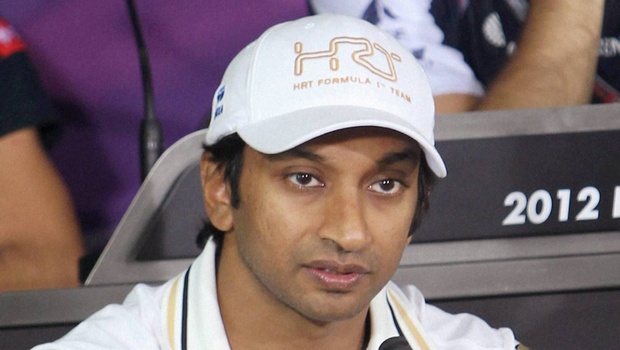
It may not be Formula One, but it is as close as it gets!
When Narain Karthikeyan takes his Super Formula car around for a spin at the Suzuka circuit on Saturday, he expects to go as fast as he has ever gone in his life. Japan’s premier single-seater series, formerly known as Formula Nippon, underwent a drastic revamp in the close-season and the new cars are as fast they come. The 37-year-old will race for Team Impul and is excited about his new toy.
“The new cars are the quickest on the planet and likely to match the 2014 F1 cars in terms of pace. With two-litre turbo engines, the technology is similar to F1 and there is a lot of down-force as well. At Suzuka, the Super Formula car is just three seconds slower compared to the 2013 F1 car, with similar tyre compounds. And with new F1 cars being around four seconds slower (compared to last year) at the moment, it is likely that Super Formula is the fastest series in the world at this point in time,” Narain says.
After a successful run in the Auto GP World Championship last year, where he was in the running for the drivers’ championship until the final weekend, Narain had a number of options to choose from. And until the call from Japan came, it looked like he was headed for the US-based IndyCar series. “I was considering Indycar until late last year but things didn’t come to fruition due to several reasons. Super Formula was a very straightforward choice in the end.”
Narain raced with Team Impul in Formula Nippon in 2001 and says that his familiarity with the team has helped him get used to the car. “I know the team extremely well and even though a lot has changed since 2001, things have been seamless so far.”
Five of the last 10 champions in Formula Nippon raced in Team Impul colours and Narain will start the season as one of the favourites. But the veteran knows the task will be hard.
“It will be very difficult to win the championship in the first attempt. Drivers of the calibre of André Lotterer and Loïc Duval (both WEC world champions) and even my teammate Joao Oliveira have been racing in Japan for a decade, so it is going to take a lot of work. Podium finishes will be my preliminary target followed by outright wins. It will also be challenging to drive in unknown circuits, as I haven’t competed at venues other than Suzuka recently.”
And while Narain is focused on Super Formula at the moment, it may not be the only series that he might race this season. “Formula E is an interesting concept — extremely advanced technologically and promises to engage a new motorsport fan-base with its street circuit concept. For sure I would love to be part of it, but where and how is something that isn’t very clear at the moment.”
Narain, who became India’s first F1 driver in 2005, has previously spoken of how the disparity between cars in F1 had reduced his desire to race there and says that the new regulation changes had done nothing to change his opinion.
“The changes have merely shuffled the protagonists up and down the grid. Mercedes have a massive advantage now, around two seconds a lap in terms of race pace — something which even Red Bull can’t come to terms with. Force India has leapfrogged several factory teams and is Mercedes’ closest challenger at the moment. Lotus has lost massive ground compared to last season when they were winning races.”
“F1 cannot be equalised. That’s how it has been throughout. The unpredictability and engineering is what makes F1 the pinnacle of the sport and that should never change. But for me, being in the slowest or second slowest on the grid, day in and day out is not something that I can accept anymore,” he says.
source: http://www.newindianexpress.com / The New Indian Express / Home> Sport / by Vishnu Prasad – Chennai / April 12th, 2014
C.R.I Pumps acquires Italy-based Fabbrica Italiana
CRI will be launching complete range of sewage and waste water pump solutions in India
Coimbatore-based C.R.I. Pumps has entered into a Share Purchase Agreement with the shareholders of Fabbrica Italiana Pompe Sommergibili Srl (FIPS), Milan, Italy for acquisition of 100% of the share capital of the company. The company did not disclose the acquisition cost, however said in the next 12 months it would invest around Euro 2 million.
Soundararajan, Vice Chairman, CRI Pumps Pvt Ltd, said that “CRI has been strategically focusing on different applications through organic as well as inorganic path. With the acquisition of FIPS Italy, CRI will be launching the complete range of sewage and waste water pump solutions in India using the technology transfer advantage from FIPS Italy. CRI with its strong manufacturing and R&D capability, will be able to offer World class technology to meet the growing industry demands”.
The company said that this acquisition will enable CRI to scale new heights in embracing innovative technologies in Sewage, Effluent, Drainage and Waste Water handling Solutions for Municipal, Industrial , Residential & Building applications. This is the second acquisition after its recent acquisition of Pumps & Process Systems Ltd – UK for Industrial pump range.
Fabbrica Italiana Pompe Sommergibili Srl,(FIPS) is a Milan, Italy based company founded in 1978 and has an established track record of performance in Waste & Sewage water pumps, across the globe. FIPS products has its presence in Italy, Western Europe, Eastern Europe, Middle East, South Africa, China and several other countries.
FIPS pumps range from 0.5 HP – 250 HP with Vortex, Grinder, Single Channel & Multi Channel impellers and discharge size from DN-50 to DN – 400 mm. These ranges are available from 50hz / 60hz in 2 pole, 4 pole, 6 pole and 8 pole with various material of construction to meet the demand of Municipal, Effluent and Industrial applications and ably supported by its Mixers, Guide Rail system and accessories to offer total solution.
As per Mcilvaine research report the waste water pump market is valued at $ $8 billion (around Rs 48,000 crore) globally and is growing at CAGR 5.7% for the period 2011 -16. Municipal waste water plants are the major user, contributing nearly 23% of the end-user market, followed by chemical, power and refining industries witnessing huge purchase of waste water pumps. Asia-pacific region is the key growth market, China & India being the toppers in the list.
C.R.I. estimates the market size of sewage & waste water pumps in India to be around INR 500 Crore and growing at the rate of 15 to 20 % annually, as waste water treatment sector have huge opportunity.
Orfeo Agostini, Managing Director, Fabbrica Italiana Pompe Sommergibili Srl said that with the takeover of the company by CRI, FIPS can further invest in new product developments to grow the global business while improving the profitability, by reducing costs through integrating the supply chain, making the products cost effective. We are excited by the advantages we will gain by bringing together two teams with shared values and a commitment to quality, performance and customer satisfaction.”
Soundararajan added that CRI would develop FIPS, Italy as a strong global company in waste water and sewage industry. Current management team of FIPS will continue to manage the operations of the company.
FIPS will continue to function as an independent company taking advantage of its brand, technology and its global reputation. CRI is planning to invest in FIPS, Italy to strengthen its manufacturing and research capabilities. Existing customers of FIPS will also be greatly benefited by this new acquisition, as FIPS will be able to offer better services and products to their needs.
source: http://www.business-standard.com / Business Standard / Home> Companies> News / by BS Reporter / Chennai – March 31st, 2014
Madurai students win NASA’s space settlement design contest
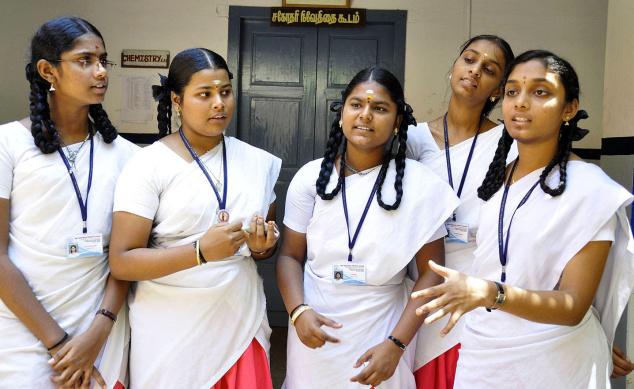
“Cronus-The Utopia”, a work of fiction, by five students of Sri Sarada Vidyalayam Girls Matriculation Higher Secondary School in the city has won the third prize in the NASA Ames Space Settlement Design Contest – 2014, under the Literary Merit category.
The team comprising class XI students _ S.B. Vishaka Nandini, M. Shenbagam, K. Kamali, P. Dhivya Priya and S.G. Yogalakshmi, is the only one from Tamil Nadu to have won the prize. Set in 2250 AD, the story narrates how rapid depletion of natural resources on earth forces human beings to settle in Cronus, a fictional space orbit of Saturn.
“In the recent years, depletion of natural resources in Earth is rapid. In our work of fiction, we have created Cronus, which is diverse from Earth in so many ways.
The resources available are all similar to the Earth, but those living there are well efficient in conservation of nature and are unaware of corruption and other vices prevailing here,” said Ms. Nandini.
“In contrast to the present day Earth, where waste is not managed properly and chemical fertilisers are used in agriculture, inhabitants of Cronus are very efficient in recycling waste, make best use of solar and wind power, and use bio fertilisers in their aeroponic farms,” explained Ms. Yogalakshmi.
The NASA Ames Space Settlement Design Contest is conducted since 1994 and this is the first time the school took part in it, said B. Kanagalakshmi, a teacher in the school.
The competitions were conducted under different categories such as Artistic Merit, Literary Merit and Projects on Space Settlement.
Under the Literary Merit category, there is a tie between Arecibo Observatory Space Academy, Puerto Rico, and Ryan International School, New Delhi, for the first prize. For the second prize, there is a tie between Sri Chaitanya Techno School and Rajiv Gandhi University of Knowledge Technologies (RGUKT), both from Andhra Pradesh. The prizes would be distributed to the students at Los Angeles in May.
source: http://www.thehindu.com / The Hindu / Home> News> Cities> Madurai / by M. Vandhana / Madurai – April 01st, 2014


